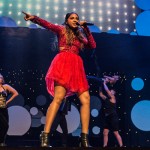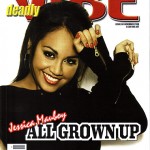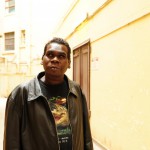Despite the recent breakout commercial success of a few, Indigenous musicians face an uphill battle when it comes to making it on the local mainstream music scene.
Over the past 18 months, two immensely talented Indigenous artists from the Northern Territory have made a significant impact on the Australian music charts.
Of course, we’re referring to Australian idol come pop queen Jessica Mauboy, and the now internationally recognised voice and guitar playing of Yolngu man, Geoffrey Gurrumul Yunupingu.
Both artists have proven that Indigenous musicians not only have the talent, but also the commercial appeal to make a mark on mainstream music charts and audiences. Despite an over abundance of similarly talented Indigenous musicians, both past and present, the question remains, why aren’t our artists getting a fair go?
Now, a research project from the Australia Council for the Arts and the Australasian Performing Right Association called ‘Song Cycles’, has shown that only a very small percentage of Indigenous artists are receiving [the same] airplay as non-Indigenous musicians, and that attitudes, physical distance, training and education are all significant barriers that are currently preventing Indigenous artists from reaching wider audiences.
“There are a lot of misconceptions standing in the way,” says Dr Mark Bin Bakar, Chair of the Australia Council Aboriginal and Torres Strait Islander Arts Board.
“There are some uglier attitudes too, which we hope the facts can sweep away. Like the promoter who told a muso when they turned up at the gig, ‘If I knew you were Aboriginal, I wouldn’t have booked you’. Audiences, musicians and venues don’t need that deadwood attitude anymore!”
Also acting as a major barrier in the progression of Indigenous artists is the lack of radio airplay given to black artists and bands.
“Community broadcasters lead the way with 4 per cent of the music they play being Indigenous. The ABC is playing less than 2 per cent and commercial radio, a very small 0.14 per cent,” says Mark.
“We’ll need to work with broadcasters to open the airwaves to more quality Indigenous content”.
It’s interesting to note that a previous study by the Australia Council found that 47 per cent of respondents said they had a growing interest in Indigenous arts, but in spite of this growing interest, as well as the high numbers of Indigenous people forging careers in music and the art’s, these stats are simply not being reflected in levels or radio play, sales and exposure.
“The Song Cycles research indicates that Indigenous musicians are disenfranchised at every stage: training up, playing live, recording, airplay, distribution and touring. No wonder people feel locked out,” says Sally Howland, Director of Member Services APRA|AMCOS and author of the Song Cycles report
“Recording music for example is a significant step for an artist; but Indigenous musicians experience barriers accessing equipment, production and technical expertise, which ultimately impairs quality. Together with impediments around distribution channels and promotion, this significantly impacts access to mainstream markets”
The research suggests overcoming these ‘sound’ barriers could be achieved by creating an environment that fosters artistic development, ensures fair compensation to composers, song writers and music artists, improves access to the mainstream market and develops a touring festival network.
Song Cycles follows the start of the recent national program developed by the Cultural Ministers Council, Breakthrough, which funds marketing and mentoring opportunities for Indigenous musicians.
You can check out the full report at the Australia Council website www.australiacouncil.gov.au






Comments are closed.